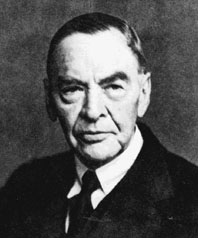

 | Page 1327 |  |
temples, palaces, and fortifications. He also worked closely with another young archaeologist, T. E. Lawrence, who was to become famous later as “Lawrence of Arabia.” Together, after the digging season had finished, they made an archaeological survey of Palestine north of Aqaba toward the southern end of the Dead Sea and managed to observe and note the Turkish government’s military strengths and weaknesses in the area at the same time.

Sir Leonard Woolley
(Image Select)
The excavation at Carchemish was interrupted by the outbreak of World War I, during which Woolley was an intelligence officer in Egypt and spent two years in a Turkish prison camp after surviving being blown up at sea off the coast of Asia Minor. In 1919, he returned to Carchemish, where completing the excavation was made difficult because of its location between the French and Kurdish armies. Funded by the egypt exploration society, Woolley moved to Egypt and excavated the house quarter of el amarna.
In 1922, Woolley began thirteen years of excavation in mesopotamia at the mound of ur, where he unearthed a long sequence of cities going back to the Ubaid period of the fifth millenium b.c. He unearthed Sumerian temples, palaces, and whole towns, and the most famous discovery of the expedition—the royal cemetery of Ur and its wonderful treasures from before 2500 b.c. He also unearthed some of the earliest literature in the world, many remarkable small finds, sculptures, and metal work. He published The Sumerians (1928), The Development of Sumerian Art (1935), Abraham (1936), The Royal Cemetery (1934), and The Ziggurat and Its Surroundings (1939) on the excavations at Ur. His popular books, such as Digging Up the Past (1930), Ur of the Chaldees (1929), and Excavations at Ur: A Record of Twelve Years’ Work (1954), were best-sellers.
Woolley continued to excavate. At Al Mina, an ancient port city near Antioch in Syria, he found ten levels of occupation from between the eighth and third centuries b.c., which shed light on the nature of the trade between Syria and the Aegean. At Tell Atchana, the site of ancient Alakakh in northwestern Syria (1937–1939 and 1946–1949), he discovered seventeen phases of middle and late–Bronze Age occupation, exposing residential, palace, and religious monuments and material culture and archives dating to the fifteenth century b.c.
In 1938, Woolley traveled to India to advise the government on a program of archaeological work for the subcontinent. During World War II, he served as a lieutenant-colonel, and in this capacity he managed to save many of the monuments, art works, museums, archives, and libraries of Europe from invading armies and bombs. He was knighted in 1935, received honorary degrees from the Universities of Dublin and St. Andrews, was awarded the Flinders Petrie Medal in 1957, and unfortunately died just before he received the gold medal of the Royal Society of Antiquaries.
See also
References
Winstone, H. V. F. 1990. Woolley of Ur: The Life of Sir Leonard Woolley. London: Secker & Warburg.
The World Archaeological Congress (WAC) is an international forum concerned with all aspects of archaeological theory and practice
 |  |